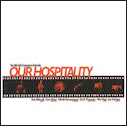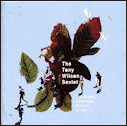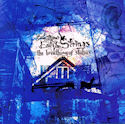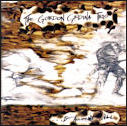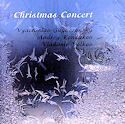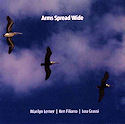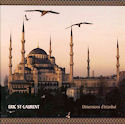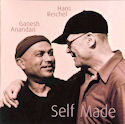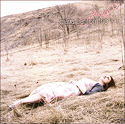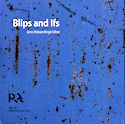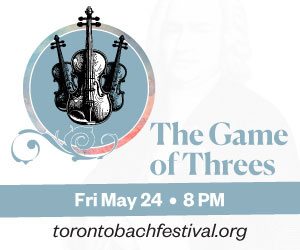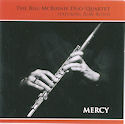 Two-by-fours are a bedrock element of Canadian vocabulary and clearly have resonance with the country’s top flutist Bill McBirnie, whose terrific new album surpasses his recent acoustic hits “Nature Boy” and “Paco Paco”. On the indie release Mercy (EF02 www.cdbaby.com) the Bill McBirnie Duo/Quartet offers a dozen-track, dazzling display of technique, dynamic range and stunning musicality. In the duo setting it’s pianist Robi Botos, joined in the quartet by rhythm stalwarts with the right stuff, bass Pat Collins and drummer John Sumner, in genre forays - bossa, ballads, bop and more. This is not neo-jazz comfort food but a feast of elegantly executed ideas with a live concert vibe. Highlights abound - the emotion dredged from Willow Weep For Me, the florid flute-piano onslaught on Airegin, the wit on Monk’s rare Stuffy Turkey, and a brilliant reimagining of Moment’s Notice. Add quick-witted interplay, adventurous flow, bluster and sophistication and this disc’s a keeper. Only the elegiac title piece seems misplaced.
Two-by-fours are a bedrock element of Canadian vocabulary and clearly have resonance with the country’s top flutist Bill McBirnie, whose terrific new album surpasses his recent acoustic hits “Nature Boy” and “Paco Paco”. On the indie release Mercy (EF02 www.cdbaby.com) the Bill McBirnie Duo/Quartet offers a dozen-track, dazzling display of technique, dynamic range and stunning musicality. In the duo setting it’s pianist Robi Botos, joined in the quartet by rhythm stalwarts with the right stuff, bass Pat Collins and drummer John Sumner, in genre forays - bossa, ballads, bop and more. This is not neo-jazz comfort food but a feast of elegantly executed ideas with a live concert vibe. Highlights abound - the emotion dredged from Willow Weep For Me, the florid flute-piano onslaught on Airegin, the wit on Monk’s rare Stuffy Turkey, and a brilliant reimagining of Moment’s Notice. Add quick-witted interplay, adventurous flow, bluster and sophistication and this disc’s a keeper. Only the elegiac title piece seems misplaced.
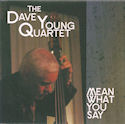 Bass guru Dave Young, he of the flying fingers and big thick notes, pushes all the right wake-up buttons on his indie album Mean What You Say (MFA 17267 www.daveyoung.ca) with his classy quartet forging steely forward momentum for the 11-cut mix of standards, jazz classics and a trio of tunes by the boss. His solos are never just an afterthought – they’re formidable, imaginative yet always to the point with a huge woody sound and impeccable timing. The band emulates him, with pianist Robi Botos, his drummer brother Frank and in-demand trumpeter Kevin Turcotte chomping at the bit. The pianist never misses the chance to roar, notably on Will You Still Be Mine which also features a stunning arco bass contribution. Young’s melodic statement on his Sandhu is grand, his robust strength and loping lines an inspiration especially to Turcotte with his exuberant swoops and sculpted notes. Seven Minds swings powerfully with intense chords and tense vitality that shows the group at its best, all urgent eloquence.
Bass guru Dave Young, he of the flying fingers and big thick notes, pushes all the right wake-up buttons on his indie album Mean What You Say (MFA 17267 www.daveyoung.ca) with his classy quartet forging steely forward momentum for the 11-cut mix of standards, jazz classics and a trio of tunes by the boss. His solos are never just an afterthought – they’re formidable, imaginative yet always to the point with a huge woody sound and impeccable timing. The band emulates him, with pianist Robi Botos, his drummer brother Frank and in-demand trumpeter Kevin Turcotte chomping at the bit. The pianist never misses the chance to roar, notably on Will You Still Be Mine which also features a stunning arco bass contribution. Young’s melodic statement on his Sandhu is grand, his robust strength and loping lines an inspiration especially to Turcotte with his exuberant swoops and sculpted notes. Seven Minds swings powerfully with intense chords and tense vitality that shows the group at its best, all urgent eloquence.
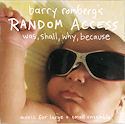 Random Access loves wallowing in collective improv but under the leadership of drummer Barry Romberg and his trademark dexterity, their rambunctious rough-housing is disciplined, often attractive, and very accessible. On Was, Shall, Why, Because (Romhog 118 www.barryromberg.com) his cast of thousands - actually 15 of Hogtown’s leading lights - demonstrate ideas with substance, power and frequent fleeting logic that amounts to a stimulating fusion of pioneering jazz forms. Intro is a chase starring Romberg and slick electric bassist Rich Brown, but the following items (Urban Landscape, I Was A Celestial Body) are vehicles for power ensembles and fierce solos from the likes of Kelly Jefferson, Brian O’Kane and Peter Lutek. This huffing and puffing is merely a warm-up for Romberg’s epic seven-movement, 40 minutes-plus Suite For The Wolfman, a totally improvised creation by the Random Access core – violinist Hugh Marsh, saxman Kirk MacDonald, guitarist Geoff Young, trumpeter Kevin Turcotte, Brown and Romberg. It has delicate playing, work that’s sly and sprightly and a consistently invigorating spontaneity.
Random Access loves wallowing in collective improv but under the leadership of drummer Barry Romberg and his trademark dexterity, their rambunctious rough-housing is disciplined, often attractive, and very accessible. On Was, Shall, Why, Because (Romhog 118 www.barryromberg.com) his cast of thousands - actually 15 of Hogtown’s leading lights - demonstrate ideas with substance, power and frequent fleeting logic that amounts to a stimulating fusion of pioneering jazz forms. Intro is a chase starring Romberg and slick electric bassist Rich Brown, but the following items (Urban Landscape, I Was A Celestial Body) are vehicles for power ensembles and fierce solos from the likes of Kelly Jefferson, Brian O’Kane and Peter Lutek. This huffing and puffing is merely a warm-up for Romberg’s epic seven-movement, 40 minutes-plus Suite For The Wolfman, a totally improvised creation by the Random Access core – violinist Hugh Marsh, saxman Kirk MacDonald, guitarist Geoff Young, trumpeter Kevin Turcotte, Brown and Romberg. It has delicate playing, work that’s sly and sprightly and a consistently invigorating spontaneity.
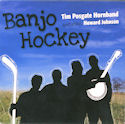 Guitarist Tim Posgate indulges new fancies with Banjo Hockey (Black Hen BHMCD0065 www.guildwoodrecords.com), playing banjo and enjoying tuba, for the latter recruiting nimble maestro Howard Johnson. Add the exploratory tastes of trumpeter Lina Allemano and reedman Quinsin Nachoff and the result is a foursome’s worth of bright, light and lively jazz that’s unusual and surprisingly subtle in its working of the leader’s 11 originals. There’s free jazz expressiveness, writing complex but clear, playful genre-bending and spirited soloing that includes Johnson doubling on baritone sax. The funky guitar, clarinet and tuba joust on Moosamin Eh! is splendid, as enticing as the other tunes that underline Posgate’s restlessly ambitious imagination which seeks to marry contemporary immediacy to jazz tradition.
Guitarist Tim Posgate indulges new fancies with Banjo Hockey (Black Hen BHMCD0065 www.guildwoodrecords.com), playing banjo and enjoying tuba, for the latter recruiting nimble maestro Howard Johnson. Add the exploratory tastes of trumpeter Lina Allemano and reedman Quinsin Nachoff and the result is a foursome’s worth of bright, light and lively jazz that’s unusual and surprisingly subtle in its working of the leader’s 11 originals. There’s free jazz expressiveness, writing complex but clear, playful genre-bending and spirited soloing that includes Johnson doubling on baritone sax. The funky guitar, clarinet and tuba joust on Moosamin Eh! is splendid, as enticing as the other tunes that underline Posgate’s restlessly ambitious imagination which seeks to marry contemporary immediacy to jazz tradition.
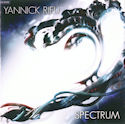 Quebec saxist Yannick Rieu has been a force for decades, and the live Montreal show Spectrum (Justin Time JTR 8546-2 www.justin-time.com) illuminates his sinewy soprano playing and composing skills in a program that draws on rock’s energy, funky fusion and structures so loose you’d think it’s every musician for himself. The package is a CD with eight Rieu tunes and eight musicians plus a five-song DVD taped in Beijing last year with guitarist Jocelyn Yellier, bassist Remi-Jean Leblanc and drummer Philippe Melanson. Odd meters and anthemic passages meld with lightweight atmospheric accompaniment. Cutting edge it’s not, despite effortless cunning interplay, but the writing is boldly original with classical accents and spacey, wintry stylings. The DVD has bigger impact – and the audience is much more enthusiastic.
Quebec saxist Yannick Rieu has been a force for decades, and the live Montreal show Spectrum (Justin Time JTR 8546-2 www.justin-time.com) illuminates his sinewy soprano playing and composing skills in a program that draws on rock’s energy, funky fusion and structures so loose you’d think it’s every musician for himself. The package is a CD with eight Rieu tunes and eight musicians plus a five-song DVD taped in Beijing last year with guitarist Jocelyn Yellier, bassist Remi-Jean Leblanc and drummer Philippe Melanson. Odd meters and anthemic passages meld with lightweight atmospheric accompaniment. Cutting edge it’s not, despite effortless cunning interplay, but the writing is boldly original with classical accents and spacey, wintry stylings. The DVD has bigger impact – and the audience is much more enthusiastic.
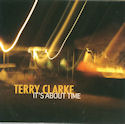 Veteran drummer Terry Clarke has been recorded on more than 400 albums but his first as leader has just arrived. The title, It’s About Time (BlueMusicGroup.com BMG 7028 www.bluemusicgroup.com), has a few droll meanings but you have to wonder why it’s taken almost 10 years for these excellent 78 minutes of throbbing music to emerge from the vaults. Four of the seven long, live tracks are from the Montreal Jazz Festival, three from the Ontario Science Centre. The Montreal tunes, which include bristling exchanges on Feel Free and a lilting calypso inspired by guitarist Jim Hall, feature Joe Lovano on tenor and later alto Greg Osby on two tracks each. Hogtown tenor duties are handled by Phil Dwyer in bruising mode, especially on Passion Dance and his own Flanders Road. Ever-present is Don Thompson, lively on bass or piano, while Clarke, who ratchets up intensity with quick turns of phrase and impish flights, is at his versatile best throughout as a relaxed, intricate time signature combatant, subtle accompanist and inquisitive, invigorating soloist.
Veteran drummer Terry Clarke has been recorded on more than 400 albums but his first as leader has just arrived. The title, It’s About Time (BlueMusicGroup.com BMG 7028 www.bluemusicgroup.com), has a few droll meanings but you have to wonder why it’s taken almost 10 years for these excellent 78 minutes of throbbing music to emerge from the vaults. Four of the seven long, live tracks are from the Montreal Jazz Festival, three from the Ontario Science Centre. The Montreal tunes, which include bristling exchanges on Feel Free and a lilting calypso inspired by guitarist Jim Hall, feature Joe Lovano on tenor and later alto Greg Osby on two tracks each. Hogtown tenor duties are handled by Phil Dwyer in bruising mode, especially on Passion Dance and his own Flanders Road. Ever-present is Don Thompson, lively on bass or piano, while Clarke, who ratchets up intensity with quick turns of phrase and impish flights, is at his versatile best throughout as a relaxed, intricate time signature combatant, subtle accompanist and inquisitive, invigorating soloist.
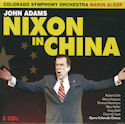 John Adams - Nixon in China
John Adams - Nixon in China

